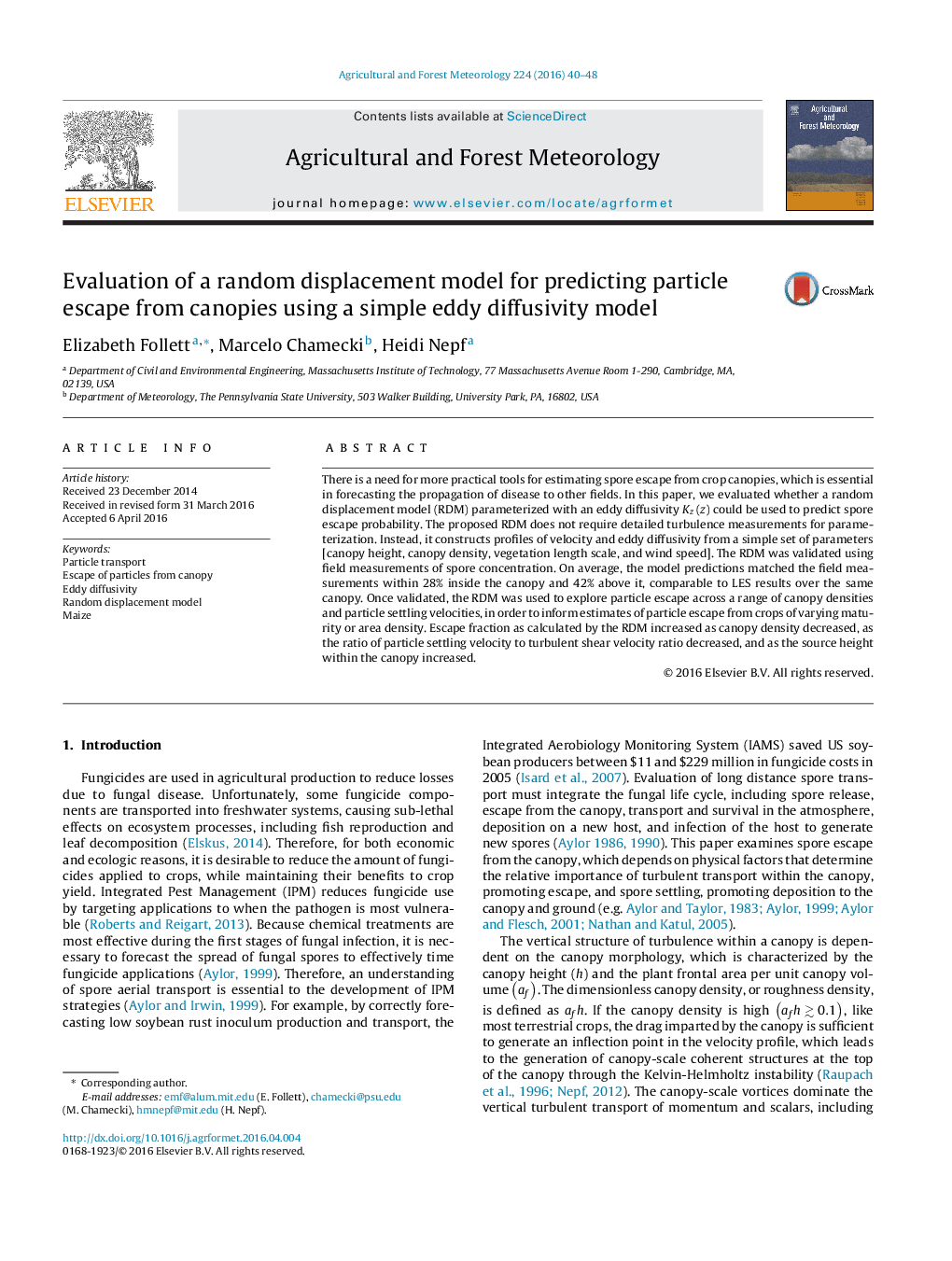| Article ID | Journal | Published Year | Pages | File Type |
|---|---|---|---|---|
| 81384 | Agricultural and Forest Meteorology | 2016 | 9 Pages |
•Particle escape from canopies is evaluated with a random displacement model (RDM).•Eddy diffusivity and velocity are predicted from canopy morphology and wind speed.•Particle escape is explored for a range of settling velocities and canopy densities.•Particle escape is elevated in the upper canopy, due to shear layer vortices.
There is a need for more practical tools for estimating spore escape from crop canopies, which is essential in forecasting the propagation of disease to other fields. In this paper, we evaluated whether a random displacement model (RDM) parameterized with an eddy diffusivity Kz(z)Kz(z) could be used to predict spore escape probability. The proposed RDM does not require detailed turbulence measurements for parameterization. Instead, it constructs profiles of velocity and eddy diffusivity from a simple set of parameters [canopy height, canopy density, vegetation length scale, and wind speed]. The RDM was validated using field measurements of spore concentration. On average, the model predictions matched the field measurements within 28% inside the canopy and 42% above it, comparable to LES results over the same canopy. Once validated, the RDM was used to explore particle escape across a range of canopy densities and particle settling velocities, in order to inform estimates of particle escape from crops of varying maturity or area density. Escape fraction as calculated by the RDM increased as canopy density decreased, as the ratio of particle settling velocity to turbulent shear velocity ratio decreased, and as the source height within the canopy increased.
